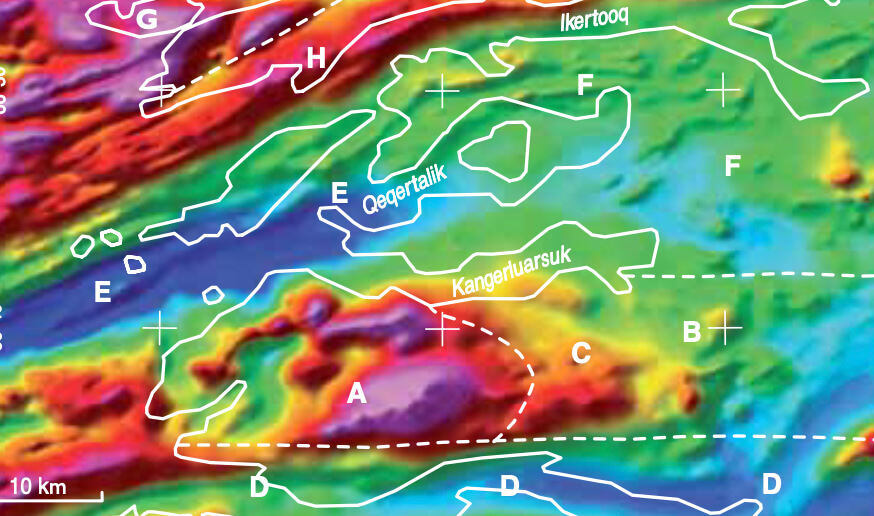
How to Cite
Share
Abstract
Within the southern Nagssugtoqidian orogen in West Greenland metamorphic terrains of both Archaean and Palaeoproterozoic ages occur with metamorphic grade varying from low amphibolite facies to granulite facies. The determination of the relative ages of the different metamorphic terrains is greatly aided by the intrusion of the 2 Ga Kangâmiut dyke swarm along a NNE trend. In Archaean areas dykes cross-cut gneiss structures, and the host gneisses are in amphibolite to granulite facies. Along Itilleq strong shearing in an E–W-oriented zone caused retrogression of surrounding gneisses to low amphibolite facies. Within this Itivdleq shear zone Kangâmiut dykes follow the E–W shear fabrics giving the impression that dykes were reoriented by the shearing. However, the dykes remain largely undeformed and unmetamorphosed, indicating that the shear zone was established prior to dyke emplacement and that the orientation of the dykes here was governed by the shear fabric. Metamorphism and deformation north of Itilleq involve both dykes and host gneisses, and the metamorphic grade is amphibolite facies increasing to granulite facies at the northern boundary of the southern Nagssugtoqidian orogen. Here a zone of strong deformation, the Ikertôq thrust zone, coincides roughly with the amphibolite–granulite facies transition. Total magnetic field intensity anomalies from aeromagnetic data coincide spectacularly with metamorphic boundaries and reflect changes in content of the magnetic minerals at facies transitions. Even the nature of facies transitions is apparent. Static metamorphic boundaries are gradual whereas dynamic boundaries along deformation zones are abrupt.
How to Cite
Share
Copyright (c) 2006 John A Korstgård, Bo Møller Stensgaard, Thorkild M Rasmussen

This work is licensed under a Creative Commons Attribution 4.0 International License.
Downloads
Editors: A.A. Garde and F. Kalsbeek
Central West Greenland exposes a large region of Archaean continental crust that was rifted and subsequently reworked in the Palaeoproterozoic during the Nagssugtoqidian and Rinkian orogenies. The southern margin of the Nagssugtoqidian orogen with its deformed Kangâmiut dykes is a classic example of an orogenic [...]









